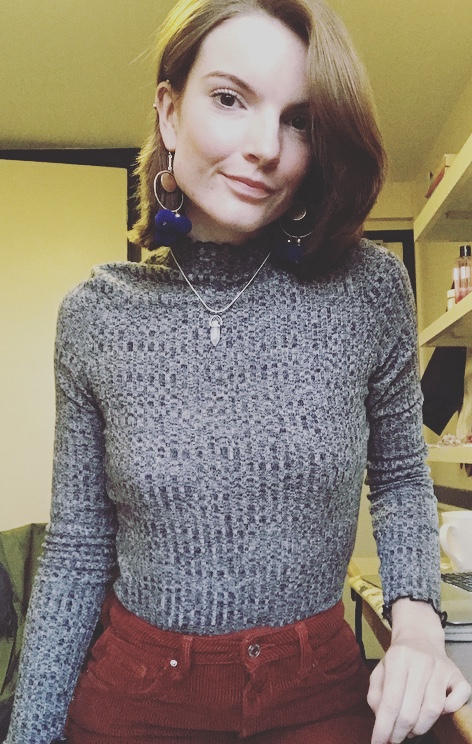The Sound of Meditation with Josh & Eliza
The hills are alive with the sounds of meditation.
The hills are alive with the sound of meditation.
We first met Josh & Eliza at the beginning of quarantine when we tuned into their weekly binaural podcast. While the wellness duo previously operated exclusively from their update dojo for live sound meditation, they have since developed an online platform to share the vibrational sounds of their studio with anyone who may need it. While the pandemic has emphasized the critical condition of our healthcare system, it has also created a lot of conversation about mental health.
In search of mindfulness during a time when our minds seem to be so full, many people have been turning to meditation. If you’re new to meditation, it may often feel like you’re not doing it correctly. Alternatively, you may not even know where to start. Thanks to Josh & Eliza, you have a space to start right here.

What brought you to the world of wellness? What was the turning point that inspired your current line of work?
E: My background is in the visual arts as an art director and designer. I originally became interested in meditation as a way to help reignite my creativity. During my first sound meditation, I connected viscerally with the sound and was able to safely explore my own inner landscape. After this, I was inspired to learn more about sound and meditation. As a facilitator, I am inspired to create a safe and nurturing space for others.
J: I spent years in NYC as a composer for TV and film. Like many in the commercial industry, I became more and more burnt-out creatively. Consequently, I was straying from the reason I was initially interested in music and sound. Developing a sound meditation practice was an effort to get back to working with sound in a more deeply personal way, as a vehicle or medium for transformation. My interest in realizing a greater potential and rediscovering inspiration led me to study transcendental meditation and later combining the world of mindfulness and meditation with my formal disciple of music and sound.
How has the pandemic influenced the way you perceive mental wellness and the necessity of resources like sound meditation?
It’s the in-between moments when we are resetting for the next instrument, the quiet shuffling, that amplifies the intimacy of being in a room with someone.
Offering sound meditation spaces virtually during the pandemic has been a beautiful way to bring people together. We are able to transmit in binaural audio which, when the listener is wearing headphones, creates a vivid 3D sonic landscape. This allows the listener to feel as if they are in the room with us. It’s the in-between moments when we are resetting for the next instrument, the quiet shuffling, that amplifies the intimacy of being in a room with someone. During a time of isolation, when all of us are apart, it was a way to create a virtual space that sonically brings us all together into one room.
What are your favorite wellness tools to keep at The Dojo or around the house?
E: Olfactory stimuli can immediately shift an environment and set intentional space. We keep incense and candles around The Dojo and the house for this purpose.
J: I think simple attention to softer lighting can also dramatically change the ambiance and environment.
What are some of your favorite vibrational sounds that occur naturally in your surroundings?
E: We live in an area that has over 150 different species of birds. I’ve recently been tuning in and in awe of the symphony they create.
J: At night time in the summer and into the fall, the woods are alive with cicadas and cadydids. There’s a natural music in the overlapping textures between different species of insects and their sonic communications.
5 tips for beginners just starting to meditate:
The breath may be the most powerful tool at your disposal.
- There is no wrong way to meditate. Be gentle to yourself.
- Try different meditation modalities and see what resonates best with you. (mantra-based, sound meditation, guided meditation)
- The breath may be the most powerful tool at your disposal. It can ground you, provide a place for attention to rest, and be the propulsion through an experience. Mindful awareness of the mechanics of your breathing is always a helpful tool when you feel the mind wandering.
- Be sure to transition slowly out of your meditation. Surfacing too quickly and moving immediately into action can often undo all the physiological benefits meditation can provide.
- Find meaningful ways to integrate your meditation experiences into a daily routine. For example, it could be as simple as remembering to slow down between tasks, or stopping to listen without agenda, without queuing up a question or one’s viewpoint. Hold space for someone else’s unloading, without any need to fix, prove, or adjust. Even saying simply and in your own way “I hear you,” can take your practice (and relationships) to new levels.
Where can our readers find you?
Our website and Instagram!

Teresa Deely is a graduate from Columbia University with majors in English and Creative Writing. She is a freelance writer and marketing assistant working for clients in the wellness, jewelry, creative, and sports industries. She believes that one’s skin is yet another canvas and vehicle for art, and has loved styling her hair and applying makeup from a young age. Spending much of her time in educating youth and leading enrichment programs for children, she is highly motivated in discovering new ways to care for herself and sharing them with others.







